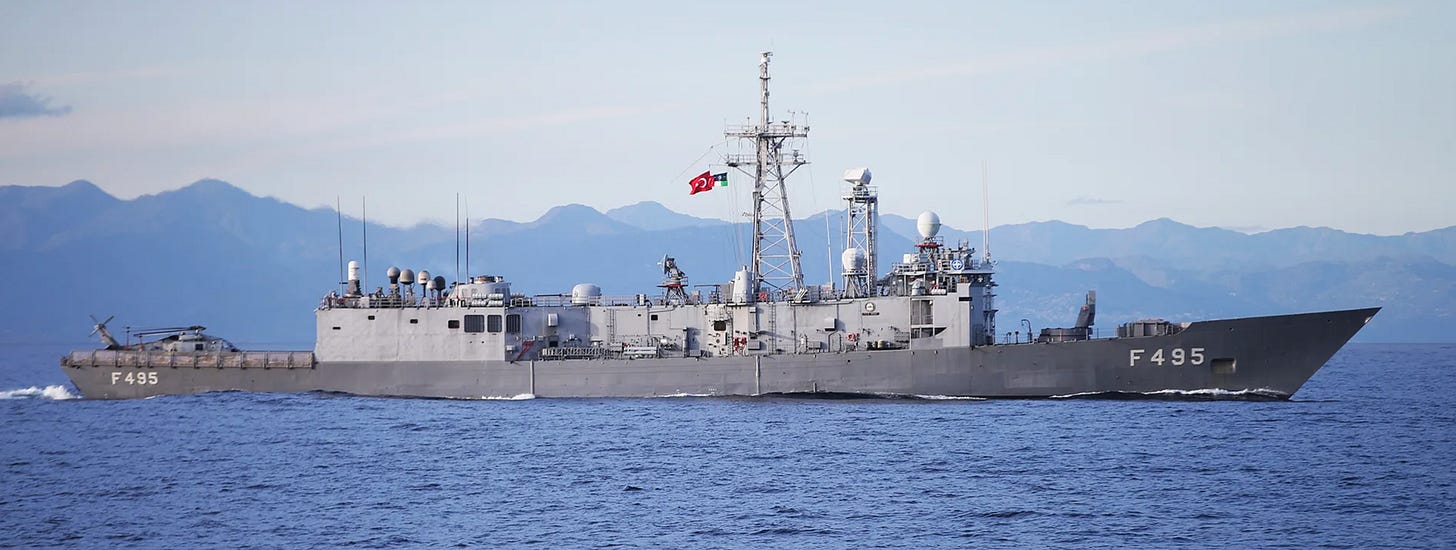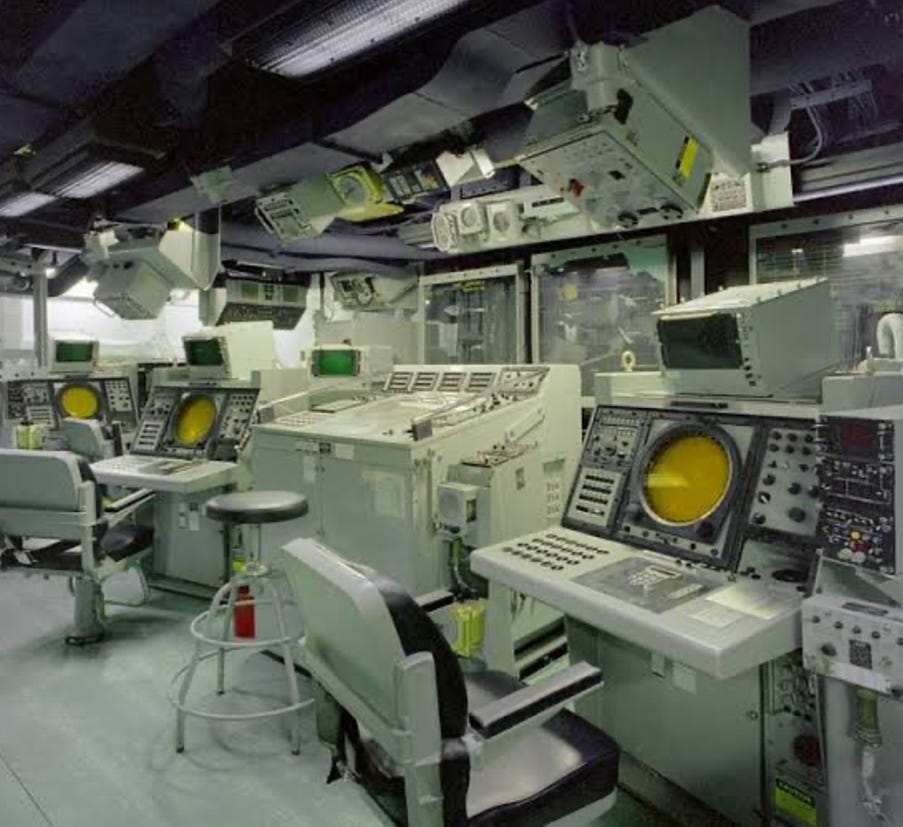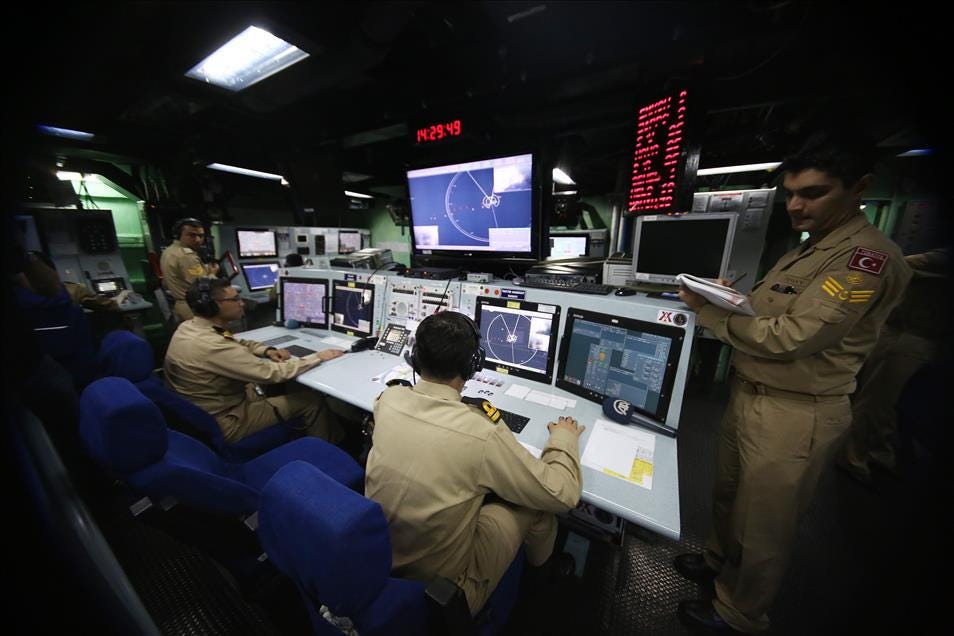The Perry's and the Path Not Taken
all we got was the Heartbreak of Psoriasis
Just look at that beautiful lady. A classic “American 8.” Approachable, handy, has an open mind with a good personality, and makes you think, “I might just have a chance with her.”
Sigh. We blew it.
Well, we treated her poorly and disrespected her talents. Now, she’s living with a Turk who does nice things for her, pampers her, and takes her fun places.
Meanwhile, that high-maintenance “Dream Girl” we left her for turned into a gold-digging trainwreck who denuded our bank account, embarrassed us with our neighbors, and did little more than hang out all day on the couch because she, “Doesn’t feel up to doing anything.”
It is time to revisit the fetid spawn of the Age of Transformation, again.
We cannot discuss the tale of the Littoral Combat Ship (LCS) and its cascading failures enough. Fewer more stark examples bring together the systemic problems that —despite the track record of the last two decades—continue to face the US Navy as an organization as comprehensively. Fewer things stand out as a warning to present and future designers of the Fleet of Tomorrow™ than this experience we continue to memory hole to avoid tender egos and organizational accountability.
A thread that weaves in and out of this icon of the Age of Transformationalism is the culture of untruth that starts with our junior officers writing our parallel-universe-hyperbolic FITREPs and ends up with our Admirals clown-car-cringe Congressional testimony. Successive generations allowed this shameful habit of toxic happy-talk imbue every aspect of the service and it largely responsible for the present state of our non-Arleigh Burke surface force. Even the well meaning but wrong people yelling “We don’t need frigates!” have yet to fully accept their culpability in the whole enterprise.
In a parallel universe where in the first half-decade of this century we took the other fork in the road, we would have “SLEP & Upgrade” our Oliver Hazard Perry Class (OHP) FFG while working on a new design frigate roughly half a generation more advanced to what eventually became the Franco-Italian FREMM that we’re in the process of ruining as the Constellation FFG.
All that money, all that institutional capital we poured down the rat-hole of LCS would now be displacing water and getting missions done freeing up our DDG for missions better suited to their talents.
As you read below, think of the whole range of missions that the LCS can’t or won’t do, and that our DDG shouldn’t do, would have been done by the post-upgraded OHP. The OHP, many of which by now would have been decommissioned after another decade of service, would be replaced hull-by-hull with a modern ship already in serial production: the American-designed “FFG-62” _____ Class frigates we never had.
We could do thousands of words on the opportunity costs - but since 2005 over at the OG Blog and here—we already have. Let’s dive into what other, smaller, and poorer nations have done with what we parked on the curb for the scrap-pickers to pick up.
15-years ago, the Australians showed what you could do—and they hopefully could have done better and cheaper with the economies of scale of doing it with the USN—with their OHPs to give them more bite in the modern era, as we covered at the time.
Well, the Turks may have been later to the game, but look at what they’ve done to the now 40+ year old eight OHP-Shorts they adopted from us and refer to as their “G-Class Frigates.”
What did they do? Well, they did not rip out the MK-13 launcher and its ability to launch Harpoon and the old-but-still-useful AAW/ASUW capable SM-1. They’re good enough for many of the targets that may come their way…but on top of that they found a way to give it extra punch for the 21st Century.
The modernization program also includes the addition of an 8-cell Mk.41 VLS for RIM-162 ESSM, together with the upgrade of the Mk-92 fire control system by Lockheed Martin; the retrofitting of the SMART-S Mk2 3D air search radar which replaced the AN/SPS-49; and the addition of a new long range sonar.
More details on their program can be found via Teyfun Ozberk’s superb overview.
Let’s start with a visual.
Remember this CIC?
Now look at it.
Also … long sleave wash khaki, as Neptune intended.
Sniff. Sniff.
The Turks knew they got a good deal and doubled down.
The Gabya class frigates, which were reactivated and put into service after the U.S. Navy decommissioned them, were used by the Turkish Navy for anti-air warfare (AAW) as their main mission function due to the medium-range SM-1 missiles they carried.
Since the late 1990s, these ships have been used in critical missions such as the non-combatant evacuation operation from Beirut in 2006 and Operation Unified Protector in Libya in 2011. They have also participated in numerous NATO and United Nations missions.
These ships, which have formed the backbone of the Turkish Navy by sailing thousands of hours every year since they entered service, have been subjected to a number of modernizations by the Turkish defense industry. These upgrades focused on countering modern threats more effectively, increasing compatibility in joint operations, enhancing detection and identification abilities by replacing outdated sensors with modern sensors, and increasing their firepower.
Note this detail:
The robustness of the hull and keel of OHP frigates, and the assessments that these ships could l be used effectively for many years to come if their CMS was renewed, have been the main motivations for investing further in them.
Remember this CIC? If you need to take a moment for a therapeutic scream and to curse all those Flag Officers who lied to you about the utility and condition of our OHPs and told you the LCS would do everything more-er and better-er, all while curing the Heartbreak of Psoriasis, feel free. Get it out of your system now. If not, you might stroke out with the next pull quote.
Before modernization, the only launcher on board was the Mk 13, which launched Harpoon anti-ship and SM-1 surface-to-air missiles. With the addition of the eight-cell Mk 41 vertical launch system (VLS), the missile launch options have been expanded, increasing both the number and types of missiles the ships can launch.
I believe there is an error in the sentences above in places. Let me point them out for the frigate autists that we all are.
The MK-13 in the OHP could hold eight Harpoon and up to 40 SM-1. Each MK-41 can hold four quad-packed ESSM. So, in theory, that would give you 32 ESSM, not 36. Also, don’t forget that jack of all trades, the Oto Melara 76mm dual-purpose gun that does everything but pay your Mess Bill.
We should all take a moment to give a nod to OG CIWIS. I bet the Russians wish they had this in the Red Sea with all those Ukrainian one-way jet skis tooling about:
Another significant upgrade is the integration of the Phalanx CIWS into the combat management system. Previously, the Phalanx CIWS (Block 0) could only engage close air targets independently, using its self-contained radars. Post-modernization, it can be commanded from the CMS, and is now capable of engaging surface targets, which especially made it useful against asymmetric threats like terrorist boats and unmanned surface vehicles (USVs).
The smartest part of this program was not just letting OHP fanbois like your humble blogg’r enjoy a bit of anti-transformationalist schadenfreude. No. Not even close.
The GENESIS project provided several benefits to the Turkish defense industry, enhancing its capabilities and contributing to its strategic goals. By developing GENESIS locally, Turkiye boosted its technological base and reduced dependency on foreign technology. This promotes self-reliance and national security. This independence increased shipbuilding projects and trust in indigenous systems.
“GENESIS was an important milestone on the way to the National Ship. We have shown ourselves, rather than the world, that we can both build such a system and integrate a ship and its systems into this system,” Özyurt said. “When the initiative taken by the Turkish Navy in the first ship was transferred to the civilian industry, our defense industry became much more familiar with ship systems, and they developed confidence in themselves. The business opportunities that emerged with the MILGEM and the policy of prioritizing domestic systems encouraged private defense industry investments,” he concluded.
Care and feeding - and growing - your shipbuilding industry and infrastructure is, actually, a thing.
Imagine how many more trained shipyard tradesmen we would have with the business the last quarter century upgrading our OHP like the Australians and Turks have. We would have that additional base of trained people to help build a fleet to meet the PRC challenge west of the International Date Line.
Instead, we have the bitter harvest from the Age of Transformationalism.
Take some time and read the full report on what the Turks have done. They deserve the kudos.
Let me close with a loop back to the opening. Why cover the LCS debacle again, and again, and again? The simple answer: the same people and processes that brought us the LCS then and are now ruining the Constellation now are still in place. We have no indications that they will be replaced anytime soon, much less be held accountable.
Present and future leaders, from Program Managers to Senators, must question everyone and everything involved in the generations-old mismanagement of our fleet. Do not defer to position or credential unless they prove themselves. Be ruthless. Demand excellence. The luxury of naval supremacy in the Pacific is past.





Hurts to say, but IMHO the last 20 years of NavSea leadership producing LCS and Zumwalt (and throw in taking 12 years and $15 billion for CVN 78} have been more successful at reducing the combat capability of the USN than anything the Chinese/Russians/Norks/Houthis/Iranians/DEI mafia- you name it - have been able to do.
Great article thanks, and don't get me started on what did to the Sprucans!!